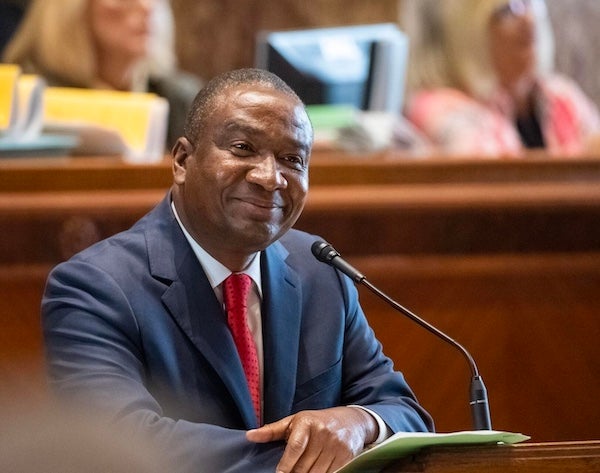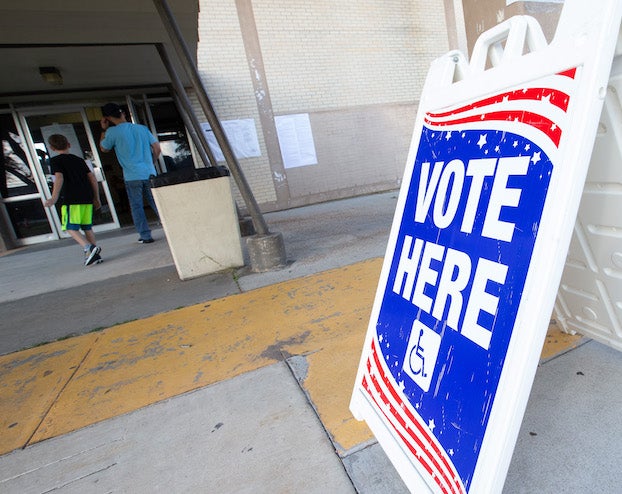Jim Beam column:Blacks waiting for new seats
Published 6:46 am Wednesday, March 20, 2024

- Louisiana state Sen. Cleo Fields, D-Baton Rouge, plans to run for a new minority-Black congressional seat if it is eventually approved by the federal courts.(Photo courtesy of NOLA.com, Michael Johnson).
Justice continues to move slowly for Black Americans. Louisiana legislators knew as far back as 1992 that the state should have a second majority-Black congressional seat and Blacks are still waiting.
Lawmakers did redraw election lines in 1992 and they created a majority-Black district, but it didn’t last.
Current state Sen. Cleo Fields, D-Baton Rouge, was also a senator in 1992 and he won the 1992 and 1994 congressional general elections. Fields served the newly created 4th District in Congress from Jan. 3, 1993, to Jan. 3, 1997.
The new district was a roughly “Z” shape that stretched from Shreveport to Baton Rouge. It was created by reaching into Black population areas in Baton Rouge, Lafayette, Alexandria, Monroe, and Shreveport.
Unfortunately for Fields and Blacks, the U.S. Supreme Court invalidated the new district as unconstitutional because it was based on race. The next serious attempt to create a second majority-Black district came in 2022 after the 2020 U.S. Census.
Louisiana had lost the 8th and 7th Congressional districts because of low population gains. That left six congressional districts and Blacks made up nearly one-third of the state’s population after the 2020 census.
Former Democratic Gov. John Bel Edwards campaigned for another second majority-Black district, but Republican lawmakers stubbornly defended their decision not to do it.
Edwards vetoed the congressional redistricting bills that lawmakers created. “It is my firm belief that this map violates Section 2 of the Voting Rights Act of 1965 and further is not in line with the principle of fundamental fairness that should have driven this process,” Edwards said in his veto message.
The Associated Press reported on March 30, 2022, that both chambers of the Louisiana Legislature voted mainly along Republican Party lines to override Edwards’ veto, “marking the first time in nearly three decades that lawmakers refused to accept a governor’s refusal of a bill they had passed.”
Those earlier vetoes came during the administrations of former and the late-Govs. Edwin W. Edwards and Buddy Roemer.
As they have had to do for many years, organizations representing Black voters sued to try and get the district they deserved. John Bel Edwards insisted the map drawn by Republicans wouldn’t survive a court test, and that is exactly what happened.
Federal courts actually went one step further. They rejected the 2022 congressional map drawn by the Legislature and also said the election maps drawn for the Legislature’s House and Senate should have created more Black districts.
Organizations representing Black citizens have said there should have been six more majority-Black districts in the House and three more in the Senate.
GOP lawmakers who refused to draw a majority-Black congressional district should have seen what was coming when the U.S. Supreme Court considered a similar case in Alabama and found that state should have created a second majority-Black congressional district.
U.S. District Judge Shelly Dick of the Middle District of Louisiana gave the Legislature a deadline for creating that second district. Republican Gov. Jeff Landry called his first legislative session to get the job done.
He signed the new majority-Black congressional district bill into law that was created from the 6th Congressional District that is currently represented by U.S. Rep. Garret Graves, R-Baton Rouge.
Some say it was a payback to Graves who supported someone other than Landry for governor.
However, Graves doesn’t seem to be bothered. He believes the court will throw out the new map because it looks much like the “Z” district created in 1992.
Graves believes the new map violates provisions of the Voting Rights Act. He said it was passed in four days without public input and violates other redistricting requirements.
A special panel of three judges appointed by the U.S. 5th Circuit Court of Appeals in New Orleans will decide whether the new map is acceptable. The Advocate said the judges have three choices — keep the latest map, order lawmakers back to the drawing board, or draw their own maps.
A trial is also set for April 8-9 in Shreveport to consider if the Legislature’s House and Senate maps are constitutional. Meanwhile, Black citizens will have to wait even longer for the justice they deserve.
| ReplyForward
Add reaction |





